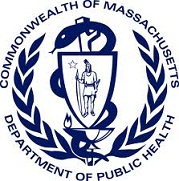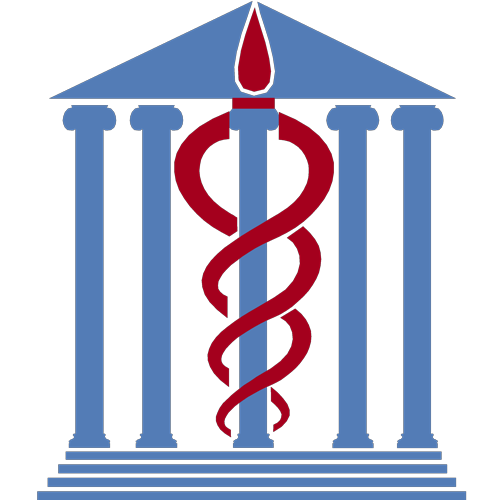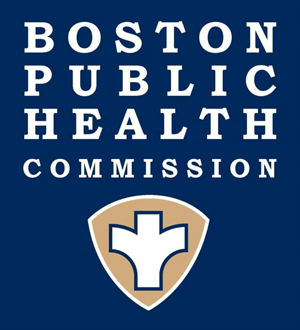Public Resources
Public Resources
High Consequence & Emerging Infectious Disease (HCID/EID) Preparedness
[edit]
This Knowledge Base topic is intended for practitioners in the following disciplines who have responsibilities for planning their organization’s response to HCID/EID outbreaks. These disciplines include:- Community Health Centers
- Emergency Medical Services (EMS)
- Hospitals
- Long Term Care
- Public Health
With access to the resources in this Knowledge Base, users should be able to:
- Define basic terminology and fundamental concepts related to HCID/EID planning and response.
- Identify best practices and relevant guidance for HCID/EID planning for public health and healthcare agencies
- Select resources for HCID/EID planning purposes
Knowledge Base Topic Areas:
Discipline Specific Resources:
Ebola Preparedness Communication Plan ![]()
by Bernadette Thomas, APRN, DNP, MPH, Lynn Community Health Center
How Large Ambulatory Care Practices Can Contribute to EID Response ![]()
by Linda Foote, PhD, Atrius Health
Public Information Challenges for Community Health Centers ![]()
by Carrie Matusko, RN, Holyoke Health Center
- Hospital All-Hazards (HAH) Self-Assessment
CDC
This self-assessment is designed to help assess and identify potential gaps in a facility's all-hazards emergency plans. It is suited to evaluating an already trained hospital staff. Upon completing the HAH, it can be use it to modify aspects of these plan(s). Individuals are encouraged to update the HAH as changes to plan(s) are made, and to include the HAH with preparedness planning documents. The HAH is geared towards hospital preparedness staff, including planners, administrators, and other key personnel. Facility may share this information with community partners (such as local public health, emergency management, and other healthcare entities) to integrate all plans into a coordinated community plan.
- Ebola Virus Disease Incident Response Guide
Bellevue Hospital
This response guide provides a protocol to screen, isolate, and treat patients who present to the facility with suspected or confirmed Ebola Virus Disease while minimizing the risk of transmission to health care workers and others.
- HICS Guidebook, Fifth Edition (2014)
California Emergency Medical Services Authority
Focuses on healthcare facility preparedness and provides hospitals of all sizes and missions with the tools needed to advance their emergency preparedness and response capability.
- Estimated Personal Protective Equipment (PPE) Needed for Healthcare Facilities
CDC
This resource helps in determining the amount of PPE needed for healthcare facilities, including Healthcare Team Roles and Descriptions and a PPE Calculator. The PPE Calculator can be used to determine the amount of PPE your hospital needs to manage a patient with Ebola.
- Guidance on Personal Protective Equipment (PPE) To Be Used By Healthcare Workers during Management of Patients with Confirmed Ebola or Persons under Investigation (PUIs) for Ebola who are Clinically Unstable or Have Bleeding, Vomiting, or Diarrhea in U.S. Hospitals, Including Procedures for Donning and Doffing PPE
CDC
To be used by Healthcare Workers during Management of Patients with Confirmed Ebola or Persons under Investigation (PUIs) for Ebola who are Clinically Unstable or Have Bleeding, Vomiting, or Diarrhea in U.S. Hospitals, Including Procedures for Donning and Doffing PPE.
- CDC Guidance for Donning and Doffing Personal Protective Equipment (PPE) During Management of Patients with Ebola Virus Disease in U.S. Hospitals
CDC
This video is based on CDC Guidance on Personal Protective Equipment To Be Used by Healthcare Workers During Management of Patients with Ebola Virus Disease in U.S. Hospitals, Including Procedures for Putting On (Donning) and Removing (Doffing), as of October 20, 2014. This video demonstrates one methodology for putting on and taking off personal protective equipment safely.
- Precautions for Hospitalized SARS Patients
CDC
The objective of this document is to reinforce basic infection control practices in healthcare facilities and among healthcare personnel regarding Severe Acute Respiratory Syndrome (SARS).
- Hospital Preparedness Checklist For Pandemic Influenza: Focus on pandemic (H1N1) 2009
WHO
To enhance the readiness of the health facilities to cope with the challenges of an epidemic, a pandemic or any other emergency or disaster, hospital managers need to ensure the initiation of relevant generic priority action. This document aims to provide a checklist of the key action to carry out in the context of a continuous hospital emergency preparedness process.
- Preparing U.S. Hospitals for Ebola
CDC
CDC has developed a strategy to help healthcare facilities and state health officials prepare for patients with possible or confirmed Ebola. This strategy identifies which hospitals will provide different levels of care for patients being assessed and treated for Ebola.
- Addressing Infection Prevention and Control in the First U.S. Community Hospital to Care for Patients With Ebola Virus Disease: Context for National Recommendations and Future Strategies
Annals of Internal Medicine
Describes the multiple tiers of the occupational safety and health hierarchy of controls (engineering controls, administrative controls, and PPE) that were implemented in a community hospital in Texas, in order to treat a patient diagnosed with Ebola virus disease (EVD).
by Dr. Shira Doron, MD, FIDSA, Tufts Medical Center
Emerging Infectious Disease Response: Hospital Perspective ![]()
by Sheila Wallace, BSN, BA, MA, CHPA, CHC, Steward Health Care
Hospital Role in Integrated Planning and Response ![]()
by Lucy Britton, BS, RN, Berkshire Medical Center
- EMS Infectious Disease Playbook
ASPR/TRACIE
The aim of this Playbook was not to develop novel guidance for emergency medical services (EMS) agencies, but to unify multiple sources of information in a single planning document addressing the full spectrum of infectious agents to create a concise reference resource for EMS agencies developing their service policies.
- EMS Response to High-Risk Patients
DelValle Institute for Emergency Preparedness
This course was developed in 2015 in partnership with MDPH. The instructor and participant materials are now available for organizations to use for their own training purposes. This course delivers the latest recommendations from the Centers for Disease Control for EMS personnel responding to high risk (Category A) infectious agents. The purpose of this course is to lessen the chances of an unprotected exposure to EMS personnel. Topics covered include: the recognition of infectious patients, proper use of personal protective equipment (PPE), and extrication and transport techniques.
- Interfacility Transport of Confirmed Patients or PUI
CDC
State EMS officials and regional and state EMS planners can use this information to develop regional transport networks, local transport plans, and standard operating procedures. Managers and medical directors can use this guidance to develop procedures and protocols for their services to conduct inter-facility transport (including intrastate or interstate) of PUIs and patients with confirmed Ebola; may also use the information to prepare, educate, and train EMS personnel. Individual providers may use this information to stay safe when responding to and transporting PUIs or patients confirmed to have Ebola.
- ISOPOD Basics
National Ebola Training and Education Center (NETEC)
Discusses use of an isopod during patient transfer; an isopod is a negative-pressure individual patient isolation and transportation system that keeps contamination and disease inside the unit, protecting first responders while simultaneously allowing for life-saving medical procedures
o ISOPOD Basics: Patient Care - ISOPOD Basics and Patient Care
o ISOPOD Basics: Immediate Response Technology (IRT) Model – Assembling and using ISOPODs manufactured by IRT
o ISOPOD Basics: TVI Model - Assembling and using ISOPODs manufactured by TVI
- Donning and Doffing Videos for EMS
DelValle Institute for Emergency Preparedness
The following videos were developed as part of the course EMS Response to High-Risk Infectious Patients.
o Donning Personal Protective Equipment
o Doffing Personal Protective Equipment:
o Patient Transport: Loading
o Patient Transport: Unloading
- Emergency Responder Health Monitoring and Surveillance (ERHMS)
CDC/NIOSH
This framework provides recommendations for protecting emergency responders during small and large emergencies in any setting. It is for use by all who are involved in the deployment and protection of emergency responders, including: incident command staff, response organization leadership, health, safety and medical personnel, and emergency responders.
Big Bad Bugs: Handling Infectious Disease Patients in the Pre-Hospital Environment
by Deputy Superintendent Susan Schiller, NRP, Boston EMS
EMS Response to Managing High Risk Infectious Patients
by David Faunce, EMT-P, Southeastern MA EMS Council
The EMS Challenge Transporting the High Risk Infectious Patients
by Brian Andrews, EMT-P, County Ambulance
H1N1 Response in the Nursing Home ![]()
by Sakhonh Kheuamun, Hebrew SeniorLife
- Public Health Emergency Preparedness and Response Capabilities
CDC
The 2018 Public Health Emergency Preparedness and Response Capabilities: National Standards for State, Local, Tribal, and Territorial Public Health recognizes the maturity and experience jurisdictional public health emergency preparedness and response programs have gained since 2011. As with the 2011 version, technical content is informed by applicable guidance, science, practice, and input from subject matter experts.
- Infectious Disease Emergency Response Plan
San Francisco Department of Public Health
This Infectious Disease Emergency Response (IDER) Plan is a functional response guide for the Incident Commander and other responders. The IDER Plan includes a Core Plan, four scenario-based Annexes, and Appendices. The Core Plan is modular and provides overall guidance for infectious disease emergencies. Depending on the situation parts of the plan can be activated and deactivated as necessary. The Annexes include specific recommendations for the following situations: Respiratory Aerosol Transmissible Diseases, Bioterrorism Events, Biological Agent Detection in the Environment, and Waterborne Outbreaks or Threats.
- Public Health Emergency Preparedness (PHEP) Clearinghouse
CDC
The PHEP Clearinghouse is a central repository for emergency preparedness-related statutes, regulations, orders, reports, and legal tools. The Clearinghouse is intended to aid jurisdictions considering updates and clarifications to their public health emergency legal preparedness activities.
- Selected Federal Legal Authorities Pertinent to Public Health Emergencies
CDC
Centers for Disease Control and Prevention’s (CDC’s) Public Health Law Program (PHLP) prepared the following annotated list of selected, commonly cited federal legal authorities for reference by public health officials, legal counsel, and others.
- Public Health Response Systems In-Action: Learning from Local Health Departments’ Experiences with Acute and Emergency Incidents
Hunter JC, Yang JE, Crawley AW, Biesiadecki L, Aragon TJ
The authors interviewed representatives from more than 120 local health departments regarding their recent experiences with actual acute public health incidents and found that close to 90% reported implementing non-pharmaceutical interventions in their response efforts.
- Medical Countermeasures and Non-Pharmaceutical Interventions
National Association of County and City Health Officials (NACCHO)
The timely provision of medical countermeasures (MCM) following a large-scale public health emergency such as pandemic influenza, anthrax attacks, chemical releases, and radiological events can ensure that the health and safety of those impacted are protected.
- National Association of County and City Health Officials (NACCHO) Toolbox
NACCHO
NACCHO has published a wide variety of resources that can be replicated by local emergency planners interested in setting up points of dispensing (POD), exercising their medical countermeasure plans, staffing PODs, and the like. With a free account, users can click on the URL, click on “Toolkits,” select “Medical Countermeasure (MCM) Toolkit,” and review the various tools."
- Field Epidemiology Manual
CDC
The CDC Field Epidemiology Manual is a definitive guide to investigating acute public health events on the ground and in real time. Assembled and written by experts from the CDC as well as other leading public health agencies, it offers current and field-tested guidance for every stage of an outbreak investigation—from identification to intervention and other core considerations along the way.
- Infectious Disease Surveillance, Reporting, and Control
MDPH
Local health departments, clinical providers, and laboratories will find information here regarding the reporting and control of infectious disease in Massachusetts.
o Infectious Disease Reporting
A discussion of laws and regulations governing local boards of health, healthcare providers, laboratories and other public health personnel, in reporting infectious disease
o Infectious Disease Case Reporting Forms
Access case report forms for selected infectious diseases; provides contact information if the relevant form is not found, or for more information about how to report an infectious disease.
o Infectious Disease Surveillance Data
Collected by the Bureau of Infectious Disease and Laboratory Sciences (BIDLS) are maintained in the Massachusetts Virtual Epidemiologic Network (MAVEN); disease specific reports can be obtained on this site.
Partners in communication: Unifying our message during the Ebola outbreak
by Stacey Kokaram, MPH, Boston Public Health Commission
A Multi-Disciplined Approach for Planning Emerging Infectious Diseases
by Sean O’Brien, Deputy Director, Barnstable County Department of Health and Environment
A Local Public Health Perspective to Managing Public Information
by Colleen Bolen, MPH, Worcester Division of Public Health

The DelValle Institute for Emergency Preparedness is the Education & Training branch of the Office of Public Health Preparedness. In conjunction with Boston EMS, a bureau of the Boston Public Health Commission, the DelValle Institute provides high-quality all-hazards training and exercises to develop and enhance capabilities-based preparedness. This training delivery is offered through a contract with the Office of Preparedness and Emergency Management at the Massachusetts Department of Public Health (MDPH), with funding from the Centers for Disease Control and Prevention (CDC) Public Health Emergency Preparedness Cooperative Agreement and/or the Assistant Secretary for Preparedness and Response. The views expressed in written conference materials or publications and by speakers and moderators do not necessarily reflect the official policies of the Department of Health and Human Services, nor does the mention of trade names, commercial practices, or organizations imply endorsement by the U.S. Government. For more information regarding DelValle Institute funding, please visit our funding page.






